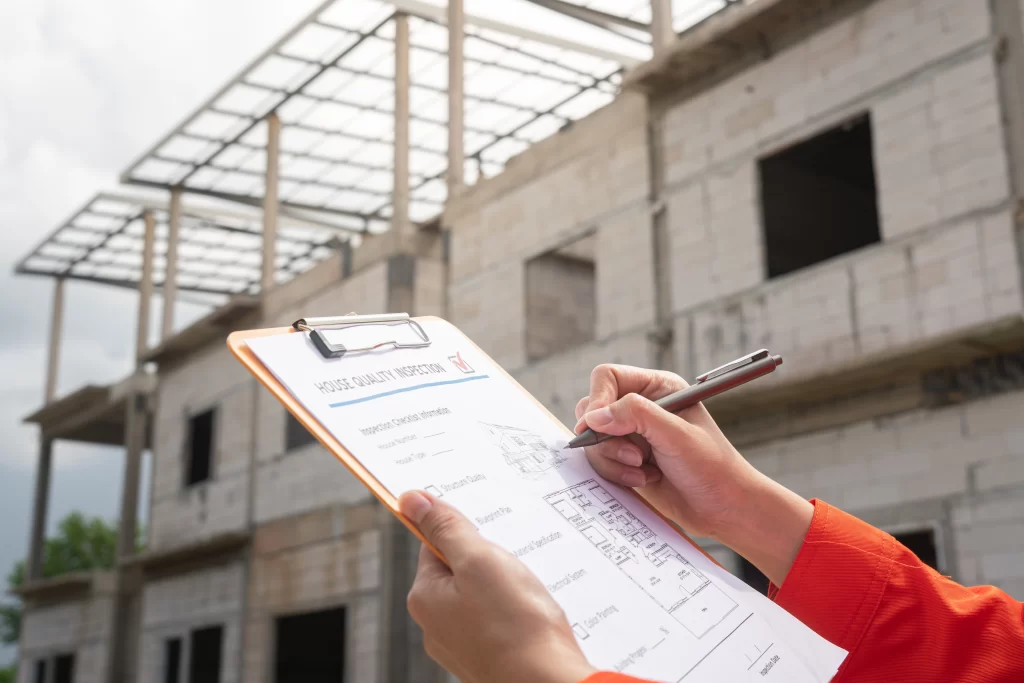What are Property Surveys and Their Importance?
Buying a property is one of the most significant investments you will make, and ensuring it is structurally sound is crucial. Property surveys provide an expert assessment of a home’s condition, helping buyers identify potential issues before committing to a purchase.
Two of the most commonly used surveys are the Level 2 Home Survey (previously known as Homebuyers Report) and the Level 3 Home Survey (previously known as Building Survey). While both serve the purpose of evaluating a property’s condition, they differ significantly in scope, detail, and suitability for different types of homes.
What Is a Level 2 Home Survey and When Is It Suitable?
A RICS Level 2 Home Survey, is designed for relatively modern properties, in good condition, and built using conventional methods, mainly suitable for houses built in the last 30 years. This survey offers a broad overview of the property’s condition, highlighting any urgent issues that might require attention.
Features of a Level 2 Home Survey Report:
- Surface-Level Assessment – This includes a visual inspection of accessible areas, such as walls, ceilings, floors, windows, and doors.
- Traffic Light System – Issues are categorised using a red, amber, and green rating system to indicate their severity.
- Identification of Significant Defects – Highlights any structural problems, dampness, or timber decay.
- Market Valuation and Rebuild Cost Estimate (Optional) – Some reports may include a valuation to help determine whether the asking price is fair.
Imagine you are purchasing a 10-year-old semi-detached house in a suburban neighbourhood. The property appears well-maintained, but you want reassurance before proceeding. A Homebuyers Report confirms that the house has minor wear and tear but no major structural issues. This gives you confidence that you are making a sound investment.
What Is a Level 3 Home Survey and When Should You Get One?
A RICS Level 3 Home Survey, is the most comprehensive type of property survey. It is particularly recommended for older buildings, properties with unusual construction, or homes that have undergone significant modifications, any home built before the 1950s is best suited to a Level 3 Home Survey.
Features of a Level 3 Home Survey:
- Detailed Structural Analysis – Examines the construction and condition of every part of the building, including hidden defects that may not be immediately visible.
- In-Depth Reports – Provides a thorough written assessment with detailed explanations of defects and suggested repairs.
- No Property Valuation – Unlike the Homebuyers Report, a Building Survey does not include a market valuation.
- Tailored Recommendations – Includes advice on potential repairs, maintenance strategies, and estimated costs.
Consider an Edwardian terrace house in a historic district. The property has charming period features but also signs of ageing, including cracks in the walls and uneven floors. A Building Survey reveals underlying subsidence issues, allowing the buyer to renegotiate the price or reconsider the purchase altogether.
Key Differences Between Level 2 and Level 3
| Feature | Level 2 Home Survey | Level 3 Home Survey |
| Best for | Modern, well-maintained homes | Older, unusual, or altered properties |
| Depth of Inspection | All areas that are safe to inspect | All areas that are safe to inspect |
| Defect Reporting | Highlights urgent issues | Comprehensive defect analysis |
| Valuation Included | Sometimes included | Not included |
| Cost | Lower | Higher |
| Recommended for | Buyers seeking a general overview | Buyers thinking of making major alterations |
Choosing the Right Property Survey
Selecting the correct survey depends on several factors, including the property’s age, condition, and construction type. Below are key considerations to help make an informed choice:
- Newer Homes (Built in the Last 30 Years): A Level 2 Home Survey Report is usually sufficient.
- Older Properties (Pre-1950s): A Level 3 Home Survey is highly recommended due to potential hidden structural issues.
- Homes with Significant Renovations or Extensions: A Building Survey ensures no underlying problems exist beneath the modifications.
- Listed Buildings or Non-Standard Construction: These properties often require a Building Survey for specialist insights.
Common Property Issues Identified in Surveys
Property surveys frequently uncover defects that may not be immediately visible to an untrained eye. Below are some of the most common problems:
- Damp and Mould Growth: Often caused by poor ventilation, leaking pipes, or rising dampness.
- Structural Cracks: Could indicate subsidence, especially in older homes.
- Roof Damage: Missing tiles, sagging rooflines, or weakened joists.
- Electrical and Plumbing Concerns: Outdated wiring, insufficient earthing, or old lead pipes.
- Timber Decay and Infestations: Dry rot, wet rot, or woodworm affecting wooden structures.
What to Do After Receiving a Survey Report
Once you receive your survey report, the next steps depend on the findings:
- Minor Issues: If only minor repairs are needed, you can proceed with the purchase while budgeting for future maintenance.
- Moderate Issues: If there are notable defects, you may negotiate the price with the seller to reflect repair costs.
- Major Structural Problems: In cases of severe issues, you may choose to withdraw from the purchase or request further expert investigations.
- Specialist Advice: If the survey highlights concerns like asbestos or subsidence, consulting a specialist is recommended before proceeding.
Final Thoughts
Understanding the differences between a Level 2 Home Survey and a Level 3 Home Survey is essential in making an informed decision when purchasing a property. While the former provides a general overview suitable for standard homes, the latter offers an in-depth structural analysis for more complex properties.
By choosing the right survey and acting on its findings, buyers can avoid unexpected repair costs, negotiate with confidence, and ensure their investment is secure.

